SARS-CoV-2 Activated Peripheral Blood Mononuclear Cells (PBMCs) Do Not Provoke Adverse Effects in Trophoblast Spheroids
- PMID: 39776066
- PMCID: PMC11706221
- DOI: 10.1111/aji.70039
SARS-CoV-2 Activated Peripheral Blood Mononuclear Cells (PBMCs) Do Not Provoke Adverse Effects in Trophoblast Spheroids
Abstract
Problem: Although it is still uncertain whether Severe Acute Respiratory Coronavirus (SARS-CoV-2) placental infection and vertical transmission occur, inflammation during early pregnancy can have devastating consequences for gestation itself and the growing fetus. If and how SARS-CoV-2-specific immune cells negatively affect placenta functionality is still unknown.
Method of study: We stimulated peripheral blood mononuclear cells (PBMCs) from women of reproductive age with SARS-CoV-2 peptides and cocultured them with trophoblast spheroids (HTR-8/SVneo and JEG-3) to dissect if SARS-CoV-2-activated immune cells can interfere with trophoblast functionality. The activation and cytokine profile of the PBMCs were determined using multicolor flow cytometry. The functionality of trophoblast spheroids was assessed using microscopy, enzyme-linked immunosorbent assay (ELISA), and RT-qPCR.
Results: SARS-CoV-2 S and M peptides significantly activated PBMCs (monocytes, NK cells, and T cells with memory subsets) and induced the upregulation of proinflammatory cytokines, such as IFNγ. The activated PBMCs did not impact the viability, growth rate, and invasion capabilities of trophoblast spheroids. Furthermore, the hormonal production of hCG by JEG-3 spheroids was not compromised upon coculture with the activated PBMCs. mRNA transcript levels of genes involved in trophoblast spheroid functional pathways were also not dysregulated after coculture.
Conclusions: Together, the findings of our in vitro coculture model, although not fully representative of in vivo conditions, strongly support the claim that the interaction of SARS-CoV-2-activated peripheral blood immune cells with trophoblast cells at the fetal-maternal interface does not negatively affect trophoblast functionality. This goes in hand with the recommendation of vaccinating pregnant women in their first trimester.
Keywords: 3D cell culture; SARS‐CoV‐2; peripheral blood mononuclear cells (PBMCs); pregnancy; spheroids; trophoblast invasion; trophoblast viability.
© 2025 The Author(s). American Journal of Reproductive Immunology published by John Wiley & Sons Ltd.
Conflict of interest statement
The authors declare no conflict of interest.
Figures

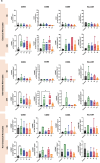
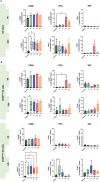
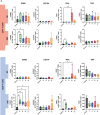
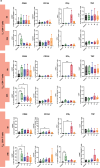
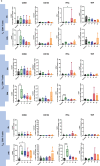
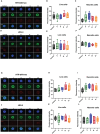

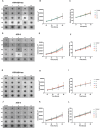

Similar articles
-
Immune rebalancing at the maternal-fetal interface of maternal SARS-CoV-2 infection during early pregnancy.Protein Cell. 2024 May 28;15(6):460-473. doi: 10.1093/procel/pwae006. Protein Cell. 2024. PMID: 38441496 Free PMC article.
-
In Situ Analyses of Placental Inflammatory Response to SARS-CoV-2 Infection in Cases of Mother-Fetus Vertical Transmission.Int J Mol Sci. 2024 Aug 13;25(16):8825. doi: 10.3390/ijms25168825. Int J Mol Sci. 2024. PMID: 39201511 Free PMC article.
-
Maternal-fetal immune responses in pregnant women infected with SARS-CoV-2.Nat Commun. 2022 Jan 18;13(1):320. doi: 10.1038/s41467-021-27745-z. Nat Commun. 2022. PMID: 35042863 Free PMC article.
-
Placental Pathology of COVID-19 with and without Fetal and Neonatal Infection: Trophoblast Necrosis and Chronic Histiocytic Intervillositis as Risk Factors for Transplacental Transmission of SARS-CoV-2.Viruses. 2020 Nov 15;12(11):1308. doi: 10.3390/v12111308. Viruses. 2020. PMID: 33203131 Free PMC article. Review.
-
Placental Immune Responses to Viruses: Molecular and Histo-Pathologic Perspectives.Int J Mol Sci. 2021 Mar 13;22(6):2921. doi: 10.3390/ijms22062921. Int J Mol Sci. 2021. PMID: 33805739 Free PMC article. Review.
References
-
- WHO , COVID‐19 Cases | WHO COVID‐19 Dashboard (2024), https://data.who.int/dashboards/covid19/cases?n=c.
MeSH terms
Substances
Grants and funding
LinkOut - more resources
Full Text Sources
Medical
Research Materials
Miscellaneous

